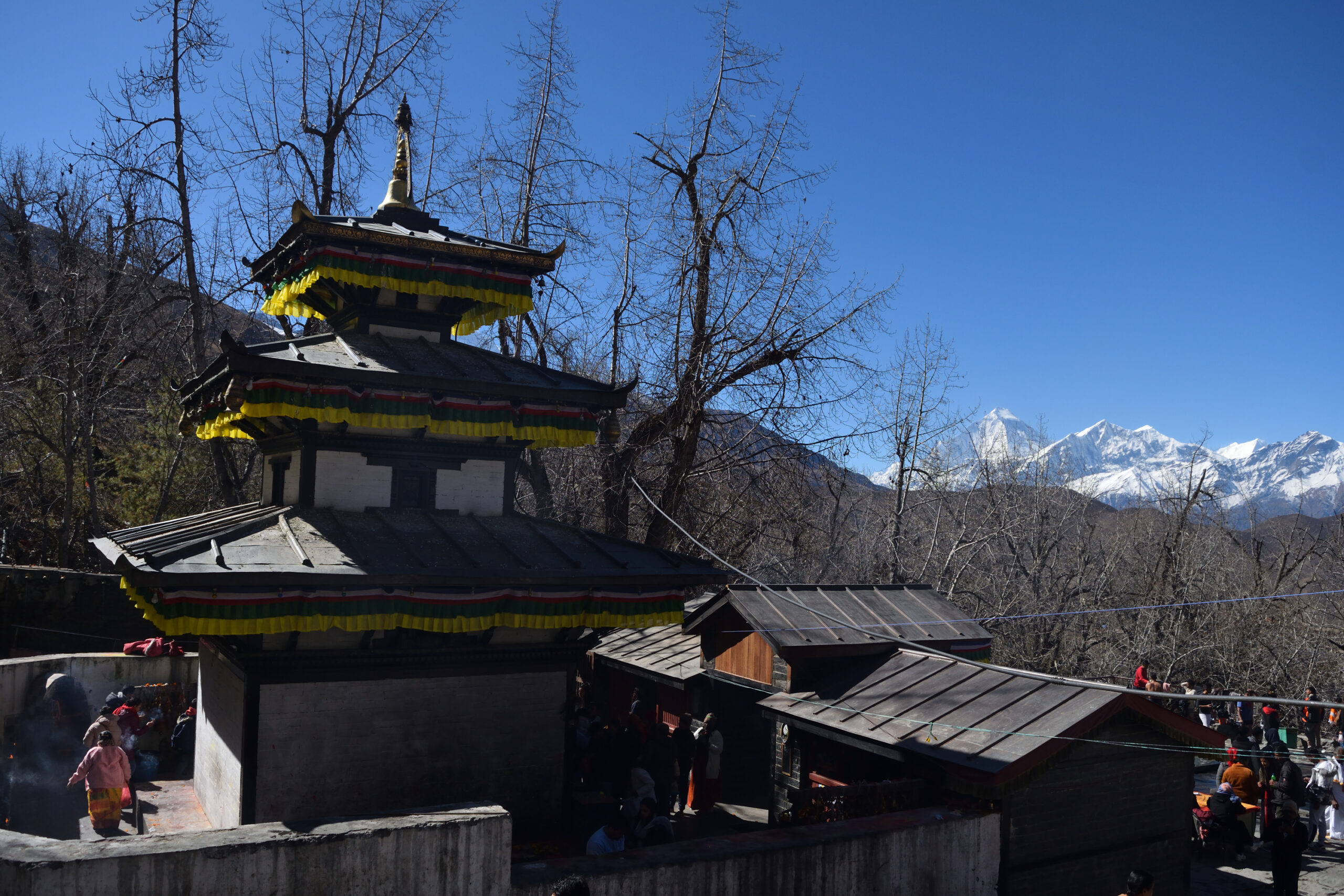Muktinath, a revered destination nestled in the Mustang district of Nepal, is a unique fusion of spiritual significance and breathtaking natural beauty. Situated at an altitude of 3,710 meters (12,172 feet) in the Himalayas, this sacred site draws both pilgrims and adventure seekers alike.
Muktinath is a sacred pilgrimage site for Hindus and Buddhists. For Hindus, it is one of the 108 Divya Desams dedicated to Lord Vishnu, and for Buddhists, it is associated with Padmasambhava (Guru Rinpoche), a revered figure in Tibetan Buddhism. The temple, believed to be a place of liberation, attracts thousands of devotees who come to offer their prayers and seek blessings.
The central attraction is the Muktinath Temple, renowned for its 108 water spouts, which symbolize the 108 sacred rivers. Pilgrims believe that bathing under these spouts can cleanse one of the sins and lead to liberation. The temple’s main shrine houses an image of Lord Vishnu, and the site also features a sacred flame that has been burning for centuries, symbolizing the divine element of fire.
Beyond its spiritual allure, Muktinath is a paradise for nature lovers and trekkers. The journey to Muktinath is as captivating as the destination itself. Visitors typically undertake a trek through the rugged terrains of Mustang, passing through picturesque villages and high-altitude landscapes. The Annapurna Circuit, one of the world’s most famous trekking routes, includes Muktinath as a key stopover.
The views of the surrounding snow-capped peaks, including the Annapurna and Dhaulagiri ranges, provide a stunning backdrop to the pilgrimage. The arid, Tibetan-like landscape of Mustang adds to the region’s unique charm, offering trekkers a chance to experience a different side of Nepal.
The best time to visit Muktinath is during the spring (March to May) and autumn (September to November) seasons. During these periods, the weather is generally clear, making it ideal for trekking and exploring the region. Winter months can be harsh with heavy snowfall, while the monsoon season may cause disruptions due to rain and landslides.
Travel Essentials
Weather: Muktinath experiences extreme temperatures, so travelers should prepare for cold conditions, especially if visiting during the winter months. Daytime temperatures in spring and autumn are pleasant, but nights can be chilly.
Duration: A typical visit to Muktinath, including the trek and local exploration, can take around 10 to 14 days. This includes acclimatization time, trekking, and visiting nearby attractions.
Permits: Trekking in the Mustang region requires special permits, which can be arranged through trekking agencies in Nepal. Ensure all permits are secured before starting the journey.
The local culture of Mustang is deeply influenced by Tibetan traditions. Visitors can experience the unique Tibetan-influenced culture of the region, including traditional festivals, local crafts, and cuisine. Local dishes such as momo (dumplings) and thukpa (noodle soup) are popular among travelers.
Muktinath stands as a testament to Nepal’s rich cultural and spiritual heritage. Whether you are embarking on a spiritual journey or seeking adventure in the Himalayas, Muktinath offers a profound experience that combines sacred reverence with stunning natural beauty. As you plan your visit, ensure you are well-prepared for the high-altitude conditions and take time to appreciate the serene landscapes and cultural richness of this exceptional destination.






